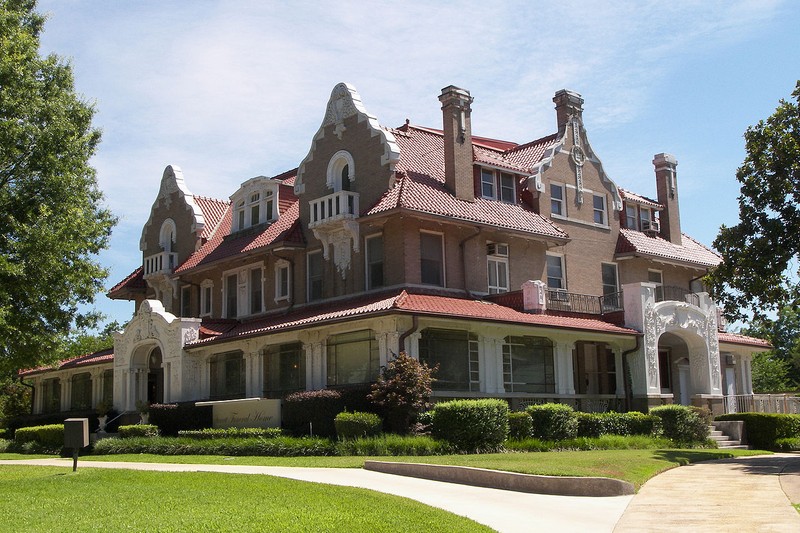Scott-Roden Mansion
Introduction
Text-to-speech Audio
Images
The Scott-Roden Mansion was built in 1910 by Rufus F. Scott. It is one of the most elegant homes in Paris.

Backstory and Context
Text-to-speech Audio
Rufus Fenner Scott rose from humble beginnings to become a self-made millionaire. He was born on a farm in Red River County, Texas on January 19, 1848. When he was 16, during the midst of the Civil War, he was a member of the Confederate Home Guard. He started his business career once the war was over, transporting freight to and from Jefferson, Texas, which was an important shipping port at the time. He earned a good reputation from stores along the route and eventually he partnered with a wholesale grocery store in Paris. He named his business R.F. Scott Grocer Co., which later became the Paris Grocer Company. He married his wife, Margaret, in 1889 and they had one son, Rufus F. Scott Jr.
Scott's expanded his business interests in other areas. He played a role in the establishment of two banks, the Paris and Mount Pleasant Railroad, and the Paris Board of Trade (which became the Chamber of Commerce), for which he served as president. He also built one of the buildings that housed one of the banks; unfortunately it burned down in the disastrous 1916 Paris fire but Scott replaced it with another building.
Six years earlier, Scott built the mansion. He selected German-born architect J.L. Wees to design it. Wees probably trained in Germany or Austria before immigrating to the United States and settling in St. Louis. He co-founded the firm Beinke & Wees and helped design a number of prominent buildings there. Scott later hired him to design the building that replaced the bank destroyed by the fire. The mansion has operated as a funeral home since 1938.
Cite This Entry
M., Ben. "Scott-Roden Mansion." Clio: Your Guide to History. October 19, 2020. Accessed April 17, 2025. https://theclio.com/entry/117293
Sources
Alexander, Drury B. & Ferguson, John. "Scott-Roden Mansion." National Park Service - National Register of Historic Places Nomination Form. September 15, 1983. https://catalog.archives.gov/OpaAPI/media/40972809/content/electronic-records/rg-079/NPS_TX/83003147.pdf.
Larry D. Moore, via Wikimedia Commons: https://commons.wikimedia.org/wiki/File:Scott_mansion_tx_2010.jpg

